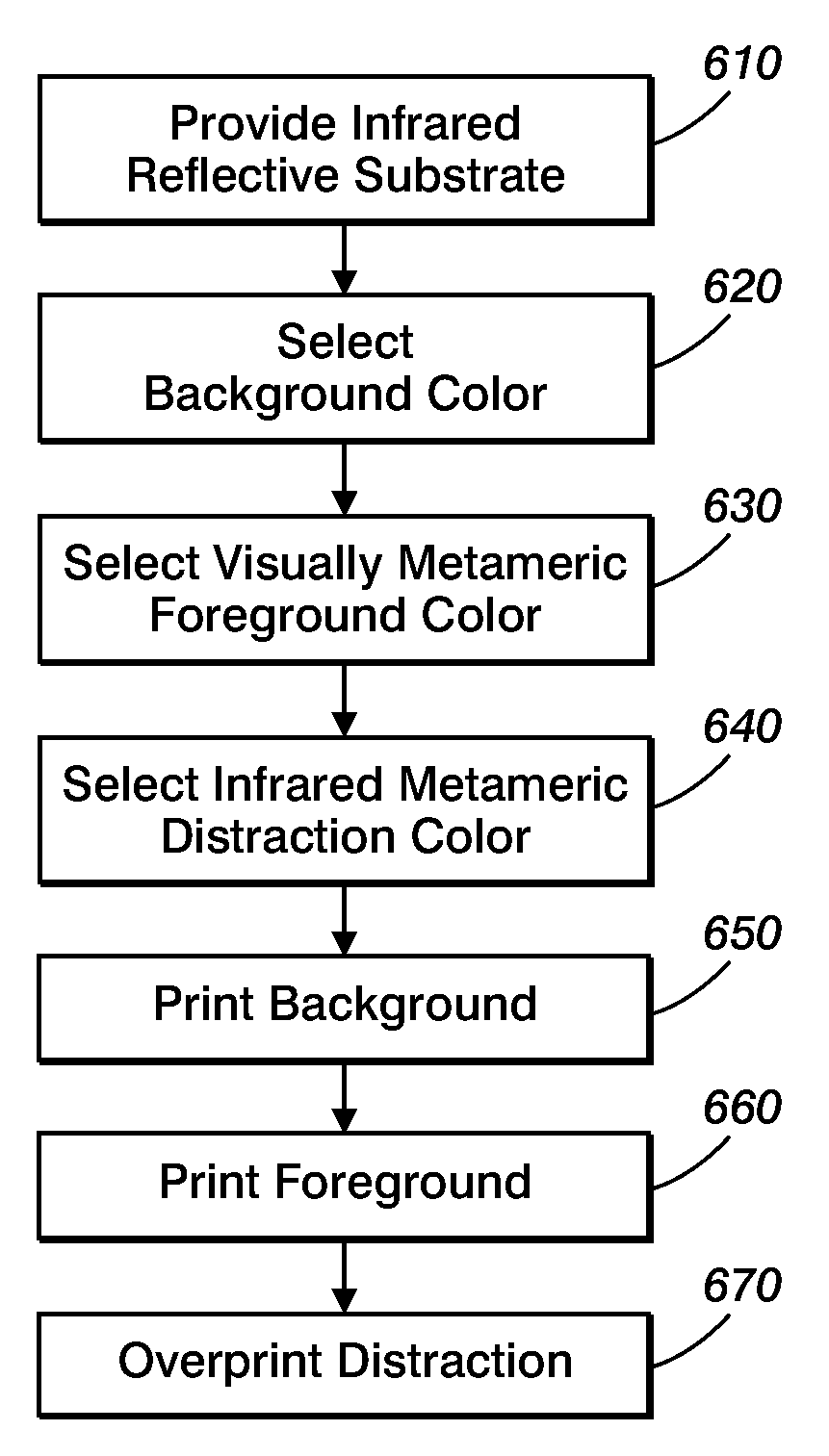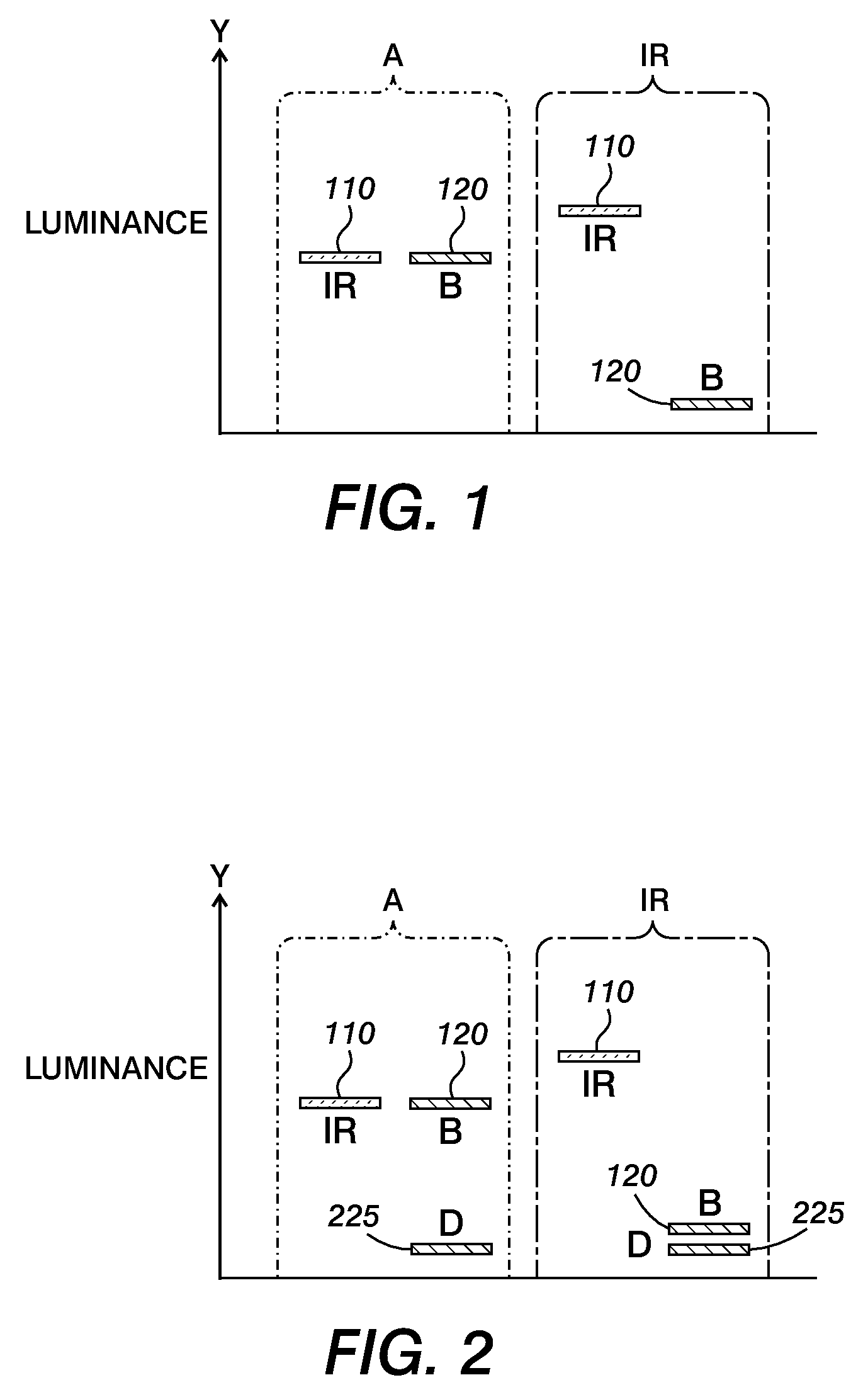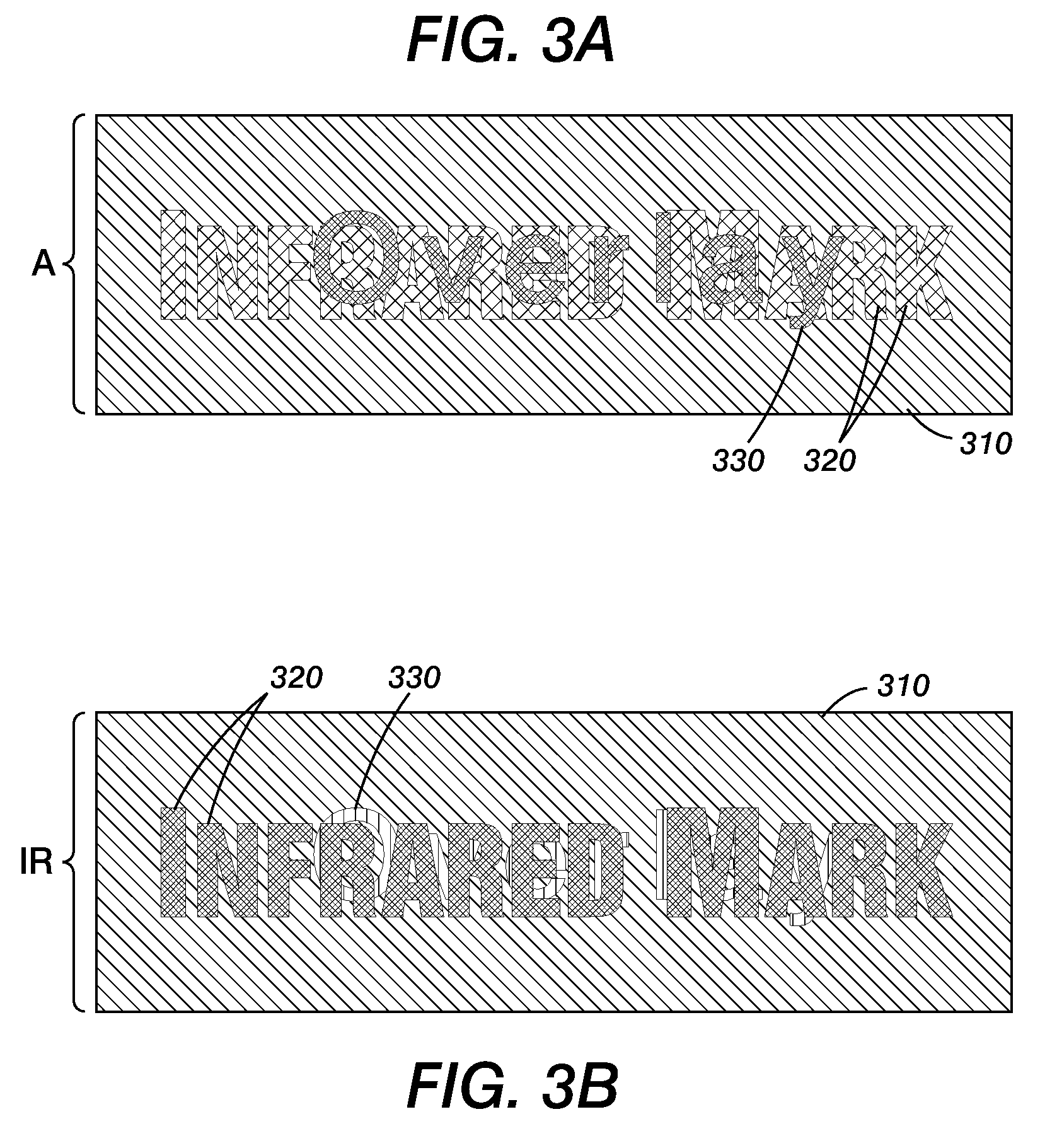Infrared encoding for embedding multiple variable data information collocated in printed documents
a technology of infrared encoding and data information, applied in the field of steganographically embedding information, can solve the problems of document useless to the printer, difficult to detect watermark types under normal viewing conditions, and high cost of ink use, and achieves noticeable visual response, low contrast, and high contrast
- Summary
- Abstract
- Description
- Claims
- Application Information
AI Technical Summary
Benefits of technology
Problems solved by technology
Method used
Image
Examples
Embodiment Construction
[0024]In the following detailed description, reference is made to the accompanying drawings which form a part hereof, and in which is shown by way of illustration specific illustrative embodiments in which the invention may be practiced. These embodiments are described in sufficient detail to enable those skilled in the art to practice the invention, and it is to be understood that other embodiments may be utilized and that logical, mechanical and electrical changes may be made without departing from the scope of the disclosure. The following detailed description is, therefore, not to be taken in a limiting sense.
[0025]For the purposes of clarity, the following term definitions are provided:[0026]Color: A color can be uniquely described by three main perceptual attributes: hue, denoting whether the color appears to have an attribute according to one of the common color names, such as red, orange, yellow, green, blue, or purple (or some point on a continuum); colorfulness, which deno...
PUM
 Login to View More
Login to View More Abstract
Description
Claims
Application Information
 Login to View More
Login to View More - R&D
- Intellectual Property
- Life Sciences
- Materials
- Tech Scout
- Unparalleled Data Quality
- Higher Quality Content
- 60% Fewer Hallucinations
Browse by: Latest US Patents, China's latest patents, Technical Efficacy Thesaurus, Application Domain, Technology Topic, Popular Technical Reports.
© 2025 PatSnap. All rights reserved.Legal|Privacy policy|Modern Slavery Act Transparency Statement|Sitemap|About US| Contact US: help@patsnap.com



